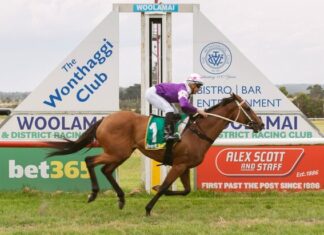BY 1932 the fire brigade had grown into an important part of the Berwick district and community support was building along with the volunteer unit.
The brigade had been in existence as an official unit for six years and was experiencing change.
The unit relocated from High Street to a new home in Gloucester Avenue on the site now occupied by Gembrook MP Tammy Lobato.
The new fire station was built from funds contributed by the community and the Country Fire Brigades Board (CFBB).
The brigade also acquired its first motor carriage pump during that year.
The vehicle was the first motorised firefighting vehicle in the region and was built on a Buick chassis by Berwick businessman and volunteer fireman A. McNabb, whose engineering ingenuity created the pumping system.
The truck was a tribute to its builder, the brigade members and their vision.
The design became the model for many future motorised appliances built by the CFBB.
The truck still exists and is owned by a private collector of historical fire appliances.
It is proposed to return the vehicle to Berwick for the first time in 30 years to be a centrepiece of this year’s 80th birthday celebrations.
Fires were few and far between in those early days. In the brigade’s first 10 years between 1926 and 1936, the firemen only had to contend with 12 fires.
Over the next decade the brigade experience enormous growth and continued to compete at state and regional competition events.
In 1941, Berwick experienced one of its biggest and most serious fires in its relatively short history. Two trucks collided at the bottom of the Berwick hill outside McNabb’s Petrol Station on the then Princes Highway, now the Shell Service Station.
One of the trucks was thrown inside the garage.
On arrival the brigade found the whole garage burning fiercely and the driver of the truck was pinned in his cabin over a petrol pump.
The driver was released after approximately one hour and taken to hospital along with two men from the other truck.
One fireman, exsecretary F Curran, suffered a horrific injury when his leg was blown off below the knee when hit by a section of an oxygen cylinder which exploded in the fire.
In 1940 E. Richardson resigned from his role as captain and was replaced by his brother, S. Richardson.
He served as captain for the next two years and then in 1942 handed the reigns over to Jim Richardson, who held the position for the next five years.
The Richardson brothers led the brigade for a total of 20 years between them.
Captains to follow included A. Bradford (194753), S. Smith (195354), J. Fritzlaff (195463), R. Mayo (196367), T. Scanlan (196770), C. Turner (197073), J. Tindall (197389), Ken Fritzlaff (198997) and Alan Boyd (1997present).
Throughout the 1950s the brigade continued to provide its essential service to the Berwick community.
During this period another of Berwick’s memorable major fires occurred when three High Street shops were burnt out in October 1955.
These shops were Forbes Cycle Shop, Hudson and CottonStapletons Real Estate and the Berwick Dry Cleaners.
Those buildings were located between the Berwick Inn and the Berwick Mechanics Institute and Free Library.
It was only due to the extreme dedication and skill of the firemen that more buildings were not lost, notable the Mechanics Institute.
In the 1960s the brigade commenced its record run as the State’s Champion Discipline team when it won the State Championship 11 times, 1960 to 1967, 1970, 1974 and 1975, a record yet to be bettered.
Competitions and training were becoming more and more important for the brigade and in 1964 it built its own competition facility at Akoonah Park adjacent to Cardinia Street.
In that same year it hosted the Yarra Valley Championship Demonstration on its new track — a vast improvement over the rough surface of Gloucester Avenue where the brigade had trained for more than 35 years.
That facility served the brigade for many years until the State Rivers and Water Supply Commission needed to put in a major new water pipeline in the early 1980s and the training track had to go.
Get the latest news to your email inbox FREE!
REGISTER




